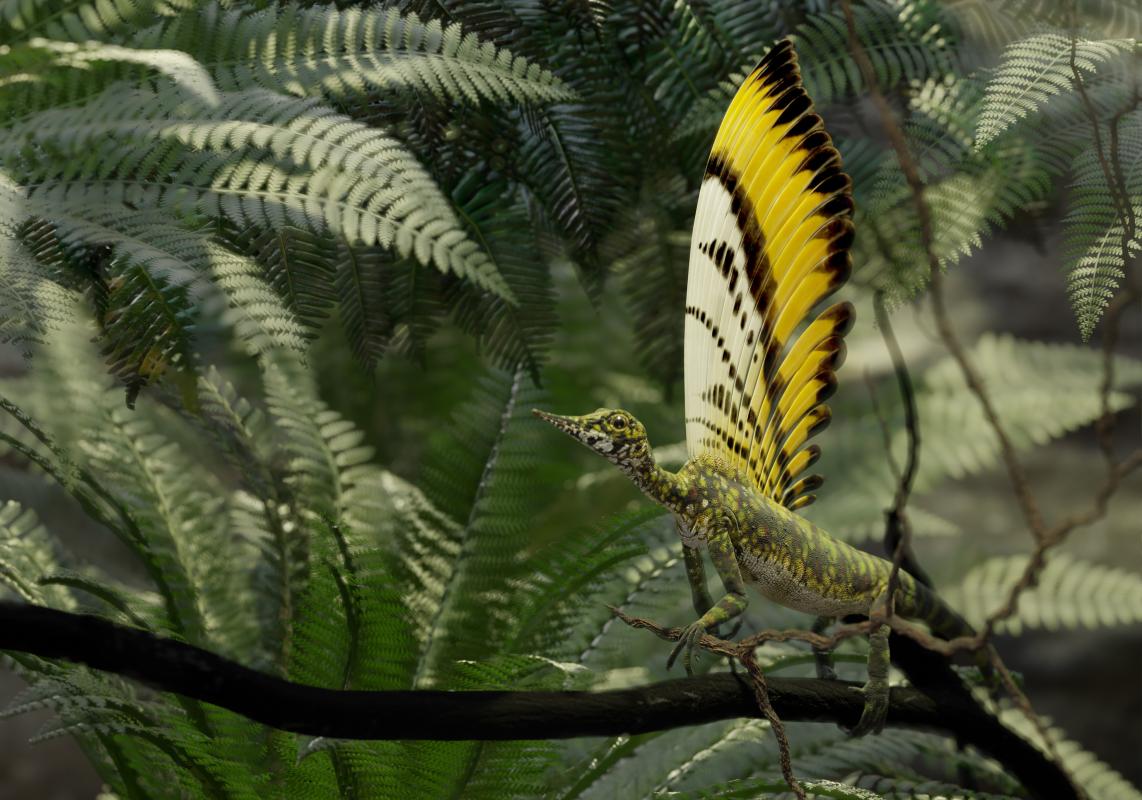An international research team just presened a groundbreaking study on a new 247-million-year-old reptile named Mirasaura grauvogeli in the scientific journal Nature. This Triassic animal displays novel, complex skin appendages that, at first glance, resemble the flight feathers of some predatory dinosaurs and birds. The discovery is of great significance for the field paleontology. Among the researchers is Dr. Christian Foth, who has been studying predatory dinosaurs and the origin of birds at the Museum für Naturkunde Berlin since June 2025.
Body coverings such as hair and feathers play a crucial role in evolution. As complex skin appendages, they enable warm-bloodedness through insulation and serve functions such as courtship, perception, deterrence, and—in birds—flight. They differ significantly from the simple scales of reptiles. Until now, such complex skin structures were known only in mammals, birds, and their closest fossil relatives—dinosaurs and pterosaurs.
An international team led by paleontologists Dr. Stephan Spiekman and Prof. Dr. Rainer Schoch from the State Museum of Natural History Stuttgart describes an early Triassic reptile named Mirasaura grauvogeli in the journal Nature. This tree-dwelling dinosaur had a dorsal crest with previously unknown, complex skin appendages, interpreted as an evolutionarily early alternative to feathers.
Dr. Christian Foth from the Museum für Naturkunde Berlin focused primarily on the morphological interpretation of Mirasaura’s skin structures. “Since the structures resemble bird feathers at first glance, part of my task was to identify similarities and differences and interpret them in an evolutionary context. The structures show no signs of branching—like feather barbs or filaments—but instead form a continuous, flat surface. Similar to feathers, however, the structures appear to be hollow inside,” said Foth.
Based on the animal’s phylogenetic position at the base of the reptile lineage, it can be ruled out that these structures are feathers or feather precursors. They must have evolved independently from birds and dinosaurs. The appendages demonstrate that reptilian skin is capable of forming complex structures beyond simple scales.
Together, the individual structures form a dorsal crest in the shoulder region, likely used for visual communication. This is supported by Mirasaura’s large eye openings. “Since we also found these structures in a juvenile specimen, we cannot limit their role to courtship behavior or similar functions. Their exact purpose requires further research,” Foth added.
Mirasaura also helps solve the mystery of Longisquama—a mysterious reptile from Kyrgyzstan with identical appendages that was previously considered a possible bird ancestor. Comparison with Mirasaura now clarifies that Longisquama’s appendages are also unrelated to feathers.
Further information here.
